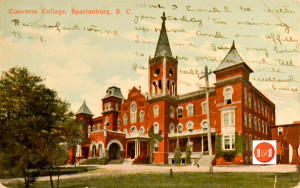
Image of Converse College in ca. 1910. Courtesy of the Coleman – Meek Collection
1 Douglas Street
City Directories and History: The Bivings-Converse House, built ca. 1836, is significant as an excellent vernacular example of mid-nineteenth century Roman Revival (or Greek Revival) residential architecture with late-nineteenth century alterations and for its association with Dr. James Bivings (1781-1869), prominent local textile pioneer, and Dexter Edgar Converse (1829-1899), industrialist, textile entrepreneur, and founder of Converse College. Bivings established the Bivingsville Cotton Factory in 1831, one of the earliest cotton mills in South Carolina. Though the factory prospered for over twenty years, it eventually went into bankruptcy and was sold in 1856. Converse, a native New Englander, was mill superintendent when it failed. He became a partner in the factory’s new ownership and bought Dr. Biving’s house sometime after 1859. It is a two-and-one-half-story frame mansion with a gabled roof and distinguished and imposing front and rear porches with impressive fluted Roman Doric columns. The house was altered ca. 1890 by the addition of two Victorian bays and a kitchen wing, alterations with significance in their own right. Listed in the National Register May 26, 1995.
(Courtesy of South Carolina Department of Archives and History) Also see Glendale History Page
The Yorkville Enquirer reported on Aug. 10, 1882 – “A fire in Spartanburg last Saturday destroyed the interior of a two story brick building belonging to Simpson Bobo. The building was used as a bakery and the loss is estimated to be between $2, – 3,000 dollars.”
————–
Glendale might well be called the “Mother of Mills.” It was one of the first cotton mills in this section of the State before the war and was then known as “Bivingsville.” After the war it struggled along quietly when suddenly its proprietors commenced to improve the factory and its lovely surroundings. The impetus given old Bivingsville by Mr. Converse and his right bower, Mr. Twitchell, infused new life into the mill interests in this county. Then Mr. Converse took hold of the old rolling mills and made Clifton what it is today. The name of Bivingsville was changed to Glendale, and now that name is well known wherever cotton goods find a market.
Just a few years prior to the beginning of the war, Mr. Converse and Mr. Twitchell came to Bivingsville and held positions in the old factory. When the war came on these two gentlemen, natives of the North, volunteered in the Confederate services, and for four long years fought a good fight. After the war they returned to Bivingsville and took their old positions. Later on they bought an interest in the factory, and since then they have been steadily successful.
The present officers of the company are: D.E. Converse, president; A.H. Twitchell, secretary and treasurer; directors, D.E. Converse, C.W. Zimmerman, and A.H. Twitchell. The product of the mill is about one million pounds of cloth per year, consisting of heavy sheeting and drills. About twenty-four hundred bales of cotton are consumed annually. Four thousand and one hundred and thirty spindles and one hundred and thirty-six looms are in use daily. There are two water wheels, and their combined force is 160 horse power. The main building, which is of brick, is 180 feet long and 50 feet wide and three stories and a half high.
The operatives are intelligent and orderly. They live in seventy-five tenement houses, neatly built and with an eye to comfort. All are painted and attractively fitted up and present a striking appearance. A new church, free to all denominations, has been built with a seating capacity of 300. Near the church is a new school house, which has been fitted up comfortably with modem desks and all the necessary appliances for a well-regulated school. A public hall has also been built and the operatives have free use of it at any time they may desire. (Information credited and reprinted from South Carolina in the 1880s: A Gazetteer by J.H. Moore, Sandlapper Publishing Company – 1989)
———–
After Dr. Bivings – 1854 -1876
Having left control of the Bivingsville mill to Silas C. Leitner who had been his partner, with the economy worsening and finding himself in a hopeless situation by ever increasing debts, Mr. Leitner left town in early 1855, leaving the mill in bankruptcy to be sold in a Sheriff’s sale.
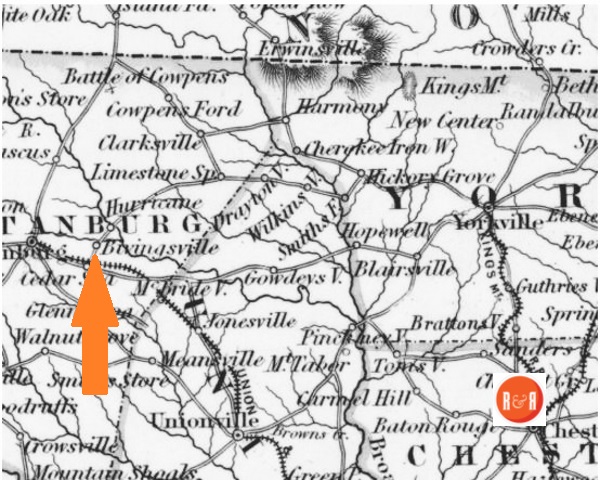
1852 SC Map showing the location of the Bivensville Community
Forming an association among themselves with a capital of some $30,000.00, J. Bomar, Simpson Bobo, S.N. Evins, Vardry McBee, J.C. Zimmerman and Dexter Converse bought the plant for $19,500 in 1856 and operated for a number of years under the name J.Bomar & Company with Dexter Converse serving as Manager. A copy of this association along with a picture of the Bivingsville Mill was hanging in the mill office at Glendale the last time I remember seeing it. When the Civil War broke out, some being suspicious of a Yankee being in town, Mr. Converse and Mr. Twichell, his brother in-law who had come from N.Y. in 1859 to be bookkeeper in the Bivingsville mill, volunteered for the Confederate army but was released in about six months being given an honorable discharge by Gen. Robert E. Lee to return to the mill which was producing material for the Confederate army. Along with war necessities, swords, bowie knives and uniform material, the mill was also producing shoes with wooden soles.
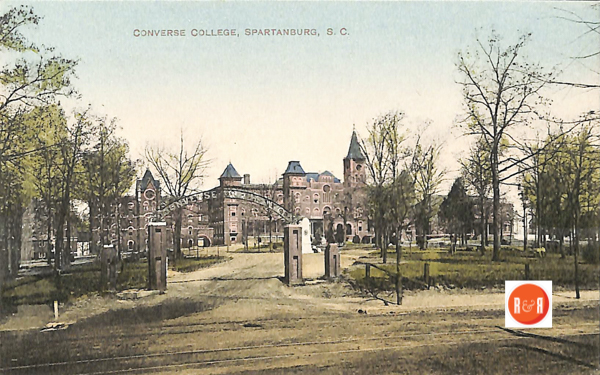
Converse College – Image courtesy of the Tucker Postcard Collection – 2017
Following Mr. Bomar’s death, (1868) Dexter Converse was promoted to President. Having reorganized by 1875, the mill had some 5,000 spindles, 120 looms, 175 employees, a grist mill, saw mill, cotton gin, machine shop and it is believed that a community building and a mill store had been added. The village had become the show place of the county. In 1876 Dexter Converse, A.H. Twichell and J.C. Zimmerman bought all interest of the others, changing the name to “The D.E. Converse Company”. The name of the village was changed to Glendale at the suggestion of Mrs. Converse and the Post-office name was changed in 1878.
The D.E. Converse Company 1876-1946
The Yorkville Enquirer of July 26, 1895 reported – “Mr. W.S. Creighton, Manager of the Rock Hill Machine Works, has contracted with Spartan Mills of Spartanburg to furnish them with a water supply.”
Dexter E. Converse, born in 1828 in Vermont worked in the cotton mills of Canada before moving to Lincolnton, N.C. from whence he came to Bivingsville, S.C. to become Superintendent of the Bivingsville Cotton Factory in 1855. He married his 17 year old first cousin, Helen Twichell from New York in 1855. Having partnered with A.H. Twichell, his brother in-law, and J.C. Zimmerman to buy the interest of all others in the mill, they incorporated the Company as,“The D.E. Converse Company” in 1889 naming Mr. Converse President.
Under the leadership of Mr. Converse, the mill continued to grow and prosper. In 1890 the company had added a three story building to the complex adding some 12,000 spindles. The village had some 75 houses. Being a real genius in textile management and finances, Mr. Converse with his partners,built and founded Clifton No. 1 Mill in 1880. In 1888 they built and founded Clifton No.2 and in 1896, just three years before his death, they built and founded Converse Mill. A news release showed he was a stockholder in the Pacolet, Whitney and Spartan Mills.
Before his death, Mr. Converse and some of his business partners having a desire for an institution in which their daughters could be schooled, founded the college for girls which was to be known as Converse College.(1889) The auditorium was named “the Twichell Auditorium” in honor of his wife’s (Helen Twichell) family name. Mr. Converse served as President of the Board of Directors for some ten years and it is said that he made up school budget deficits out of his own pocket for the first few years. Shortly before his death he had built a home on Pine street in Spartanburg where he died on Oct. 4, 1899, a “modest and much loved man”.
Mr. Twichell had built across the street at the right of the Bivings mansion in Glendale, a beautiful, spacious home for him and his family where they lived until they too, built and moved into their new home on Pine street in Spartanburg, S.C. in 1882. Mr. Converse’s death left Mr. Twichell as President. Under the leadership of Mr. Twichell a third building (five story) was built in 1902 having both water and steam power, adding 20,000 more spindles.
Mr. S. Jervey Dupre, who went to work at D.E. Converse Co in 1879 as a sweeper and became Company President and treasurer confirms these figures in an interview which he gave at a later date. Mr. W.E. Lindsey became president in 1916. S. Jervey Dupre was secretary, R.F.(Fred) Bagwell had become Superintendent in 1914 and served in that capacity until 1944. Albert Brown was card room supervisor, Will Rogers was boss spinner, Walter Gregory was over the old mill weaving and Benard White was over the new mill weave room. I. B. Rhinehart supervised the cloth room and J. T. Varner, (my Uncle) was Master Mechanic. In commenting about the loyalty of the employees and their satisfaction with their homes, Mr. Lindsey said; ”the people love to live here, they seldom leave and when they do. they are sure to come back”
A 1922 report showed the mill having 38,000 spindles. (I suppose this included the 1200 in the original mill) It had some 350 employees with a weekly payroll of $4,000.00. There were 130 homes in the community which had both water and electricity. Benard White became Superintendent in 1944 and continued until 1952. (Courtesy of the Mill Storey – Glendale Mills S.C. by Clarence Crocker)
Stay Connected
Explore history, houses, and stories across S.C. Your membership provides you with updates on regional topics, information on historic research, preservation, and monthly feature articles. But remember R&R wants to hear from you and assist in preserving your own family genealogy and memorabilia.
Visit the Southern Queries – Forum to receive assistance in answering questions, discuss genealogy, and enjoy exploring preservation topics with other members. Also listed are several history and genealogical researchers for hire.
User comments welcome — post at the bottom of this page.
Please enjoy this structure and all those listed in Roots and Recall. But remember each is private property. So view them from a distance or from a public area such as the sidewalk or public road.
Do you have information to share and preserve? Family, school, church, or other older photos and stories are welcome. Send them digitally through the “Share Your Story” link, so they too might be posted on Roots and Recall.
Thanks!
User comments always welcome - please post at the bottom of this page.
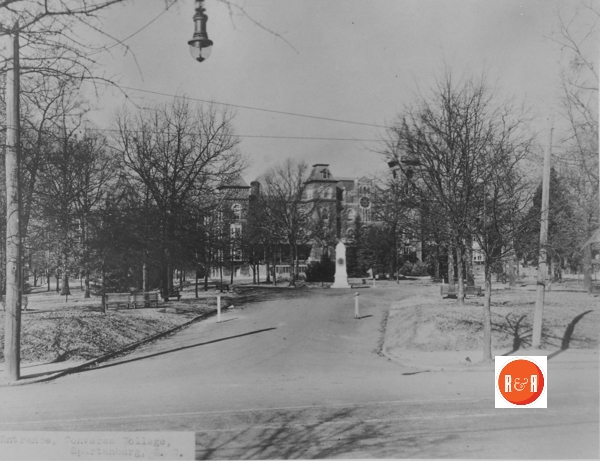
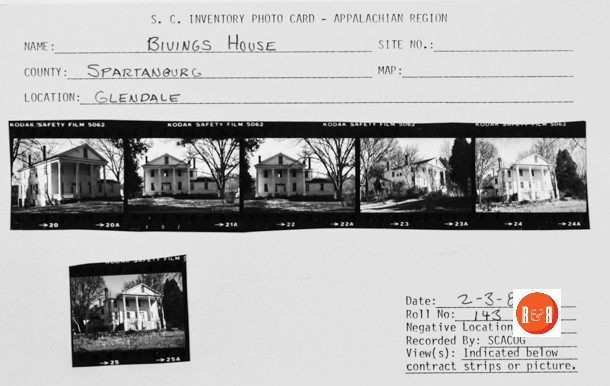
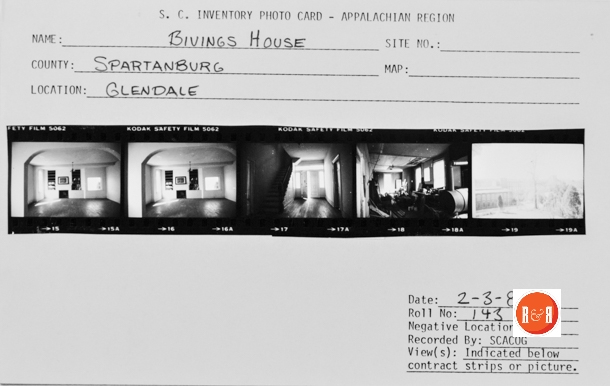
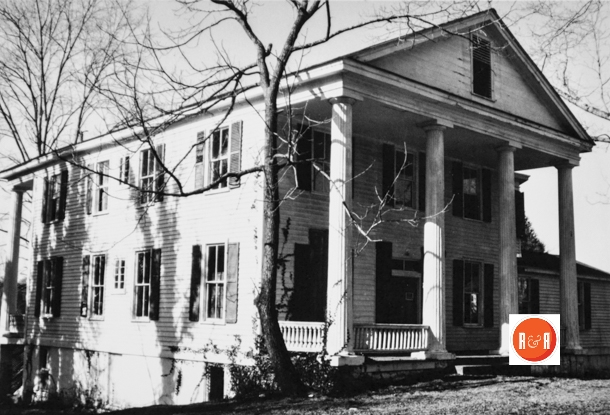
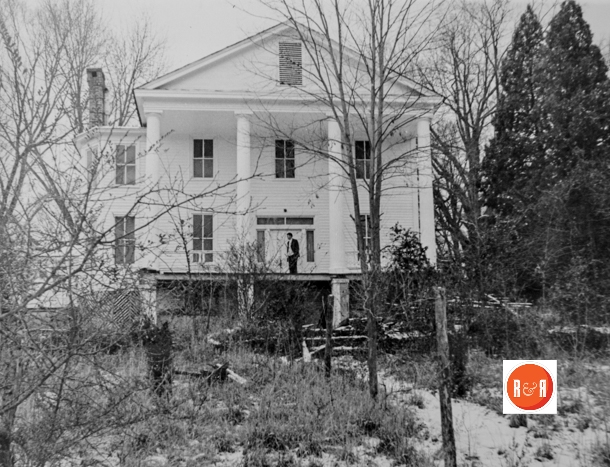
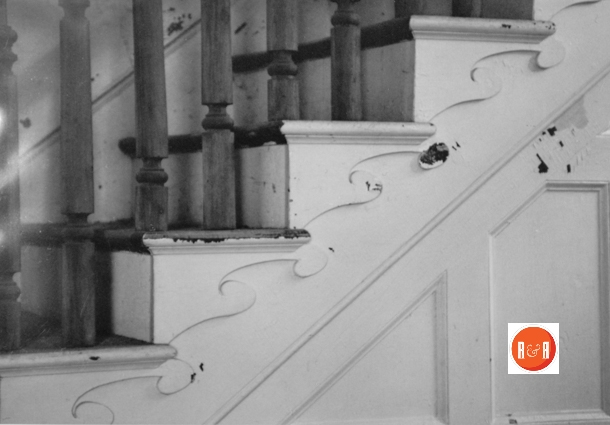
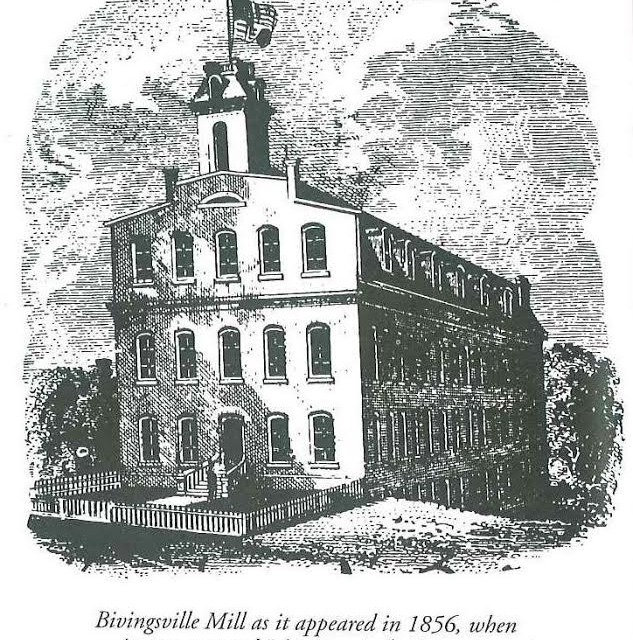
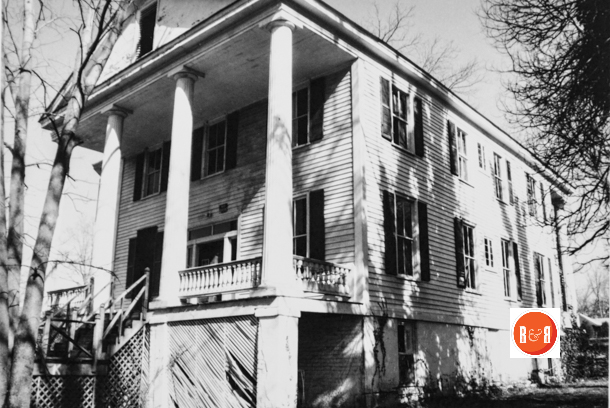





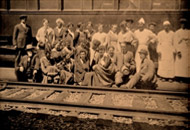
Share Your Comments & Feedback: